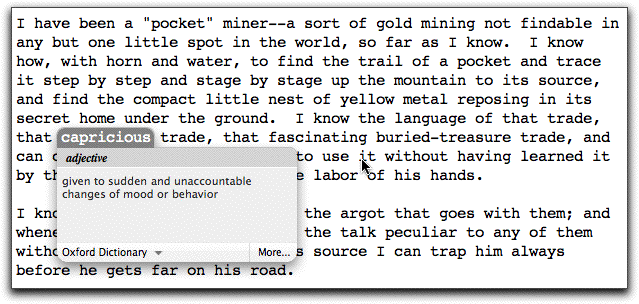April 2006 Archives
I have all the pieces to convert VHS tape to DVD with our iMac and its iMovie, iDVD, DVD writer, and plenty of hard disk space. The only thing I lack is the analog to digital video converter, which I just ordered: a Datavideo DAC-100.
The article that recommended the DAC-100 gives step by step tips on converting VHS tapes to DVDs. It ends telling how to properly take care of VHS tapes, even after converting. So I'm thinking "leaving them around on the floor in the basement to be stepped on" is not recommended.
Keep your burned DVDs in jewel cases, and store them in a cool, dark place. And consider stashing a couple of backups in a safe-deposit box.
And what about those old videotapes? If you're like me, you can't bear to throw them out, even if you've digitized them. To prolong their life, rewind them and store them vertically (like a book), with the full reel on the bottom. Store them in a cool, dry location. Fast-forward and then rewind the tapes once a year.
Here is a fun cartoon. Count the people. Wait. Count again.

Answer explained in the extended entry.
If you are browsing the web using Safari on a Mac, and you run across an unfamiliar word, you can quickly look it up. This isn't easy to remember, because the keystrokes are odd, but it is useful.
Hover the mouse over the unfamiliar word. (You do not have to highlight it.)
Type ctrl + Command (Apple) + d (as in dictionary.)
Here I was reading an article about Shakespeare from Project Gutenberg by Mark Twain and did not know what "capricious" meant. Twain does not believe Shakespeare wrote the works of Shakespeare, especially given how poorly written (yet documented to be authored by him) was his own epitaph. Project Gutenberg contains writings that are in the public domain. (That's free books, mom.)

Including one or more photos in a blog entry is a little tricky, but once you've done it a few times, it is easy. You may want to print out this tip to use the first few times.
A list of the UK Google doodles. I like the St. Patrick's day and Braille doodles from 2006.
Some people leave their hearts in San Francisco. I left my cell phone in Chicago. I think it is in the back seat of an Avis van. It was a 3-year-old phone, and I was planning on getting a new one, so this forced the issue.
After two visits to the Verizon store and consulting with some IT folks at work, I ended up buying a BlackBerry 7250. It came bundled with a Bluetooth (wireless) Jabra BT350v Headset. The photo shows me holding the BlackBerry, browsing mac.five, scrolled down to Tucker. Hi Mom & Dad! The wireless headset means the BlackBerry can sit on the car seat, in my pocket, or in my backpack, and I can take and make calls while looking like someone off of StarTrek with a blinking blue ear. Oh boy.
I've been watching the wave at work of e-mail by phone. It reminds me of previous technology waves: pagers, e-mail, Apple Powerbooks, Dell laptops, Palm Pilots, cell phones, camera phones. When a few top executives get something, it rapidly spreads down the org chart. People are surprised, but I'm not an early adopter. The leading wave rarely has utility, and is mostly fueled by false hope that this new device is going to solve your communications problems. However, once a technology gets a foothold and spreads like kudzu, it is usually time to join in or be left out.
So I went looking for a phone that could do e-mail. That way I, too, can reply and forward e-mails on the go with very short messages like: "Look at this." or "I agree." I find most of the thumbed e-mails to add little value, but I suppose being able to read detail on the go is useful.
Waiting has paid off because the company is going to standardize on the Enterprise Blackberry Server. This gives a superior e-mail experience over the Palm / Treo solutions that have been adopted by the leading wave. The second wavers are all getting Blackberry phones. The leading wave will not care because it will be an excuse to get a newer thing.
